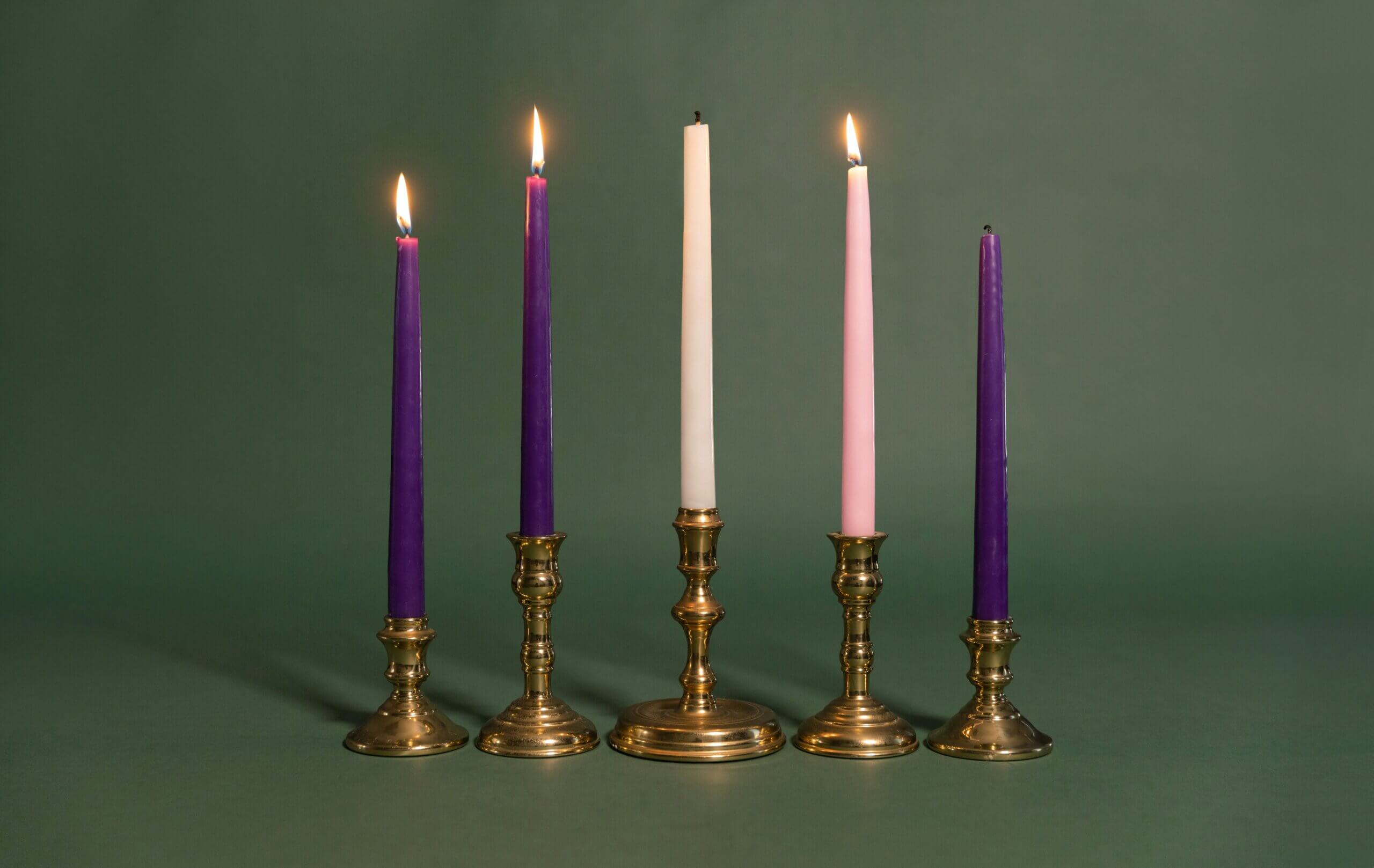+In the name of God our Maker, Jesus Living, and the Fulfilling Spirit, Amen.
[When Sherman said that we were cutting things down to make the service shorter, I thought that here was a chance for me to expand the homily—and I have a bit—especially here to make the connections clearer— though those of you who heard it, will recognize that I moved from the text more than just here and there—and what was also apparent (I am sure), was that I was cutting like mad as I was preaching—even when we had some competition from one or more of our visitors]
The first lesson from Acts 2, concludes Peter’s great first sermon in Acts (Acts 2: 14a; 36-41). The passage suggests, as Keith proposed to me this week, all of the assurance of a universal truth. Indeed it is often taken as a prescriptive homily that articulates a universal truth: Jesus is the sure and only route to salvation: Believe, repent, be baptized. Peter’s sermon as a whole had made its appeal on the basis of the whole of the scriptures concerning Jesus, as the Gospel for to-day also puts it. What is described here is the Good News, not fake news. It is not, as in the current political climate, fake news, false facts, or half-seen truths, or even hated half-truths and damned lies, that some political leaders and their press secretaries push. It is presented as Good and True News.
Peter’s sermon, however, is not a universal sermon preached to the world —instead, it is a narrowly constructed conversion sermon preached to sympathetic Jews in Jerusalem. Only later is it suggested that the sermon urges that Christianity is the one religion through which Salvation comes, a doctrine that is still part of the mission statement of the Evangelical Churches. Indeed on the front page of the Anglican Journal in the Abp. Justin Welby comments, that angle is repeated and advocated. But it is one that in our secular society is harder and harder to maintain and it is one that the rest of the issue of the Journal, with its articles on inter-religious contacts calls into question.
In the condition we find ourselves in this morning, in welcoming our Muslim brothers and sisters from the Toronto Masjid with their Imam, Wael Shehab, we are faced with the implications of Peter’s sermon to the Jews, its extension by the Evangelicals into a world-wide missionary statement, and the demands of religious ecumenism. The basic contrast is between Christian exclusivist universalism and ecumenical and religious pluralism. So let us look for a little historical context.
Luke is writing Acts about the year 80 and is trying to account for the vast increase in the number of Christians, about to climb to four million by the year 300. Here he accounts for its first growth by the preaching skills of Peter. He also sees it in the context of both Judaism and of Judaism within the vast religious pluralism of his own day, dominated politically and religiously by the gods of Rome—Jupiter, Juno, Apollo, Venus, Minerva and many others. Peter points out that the climate was a very dangerous one—Jerusalem had been levelled and the Temple destroyed by the armies of Rome ten years earlier—no wonder that people are exhorted to “save yourselves from this corrupt generation” (γενες σκολις, geneas skolias–crooked or twisted people; Acts 2:40; based on Deus 32:5). The persecutions under Nero had begun in 64/65, in which Peter and Paul had already died. So the Roman Gods were seen by Christians as cruel as were the 11 Emperors who authorized subsequent persecutions. Against those religions, Christianity offered a comparatively simple faith, morality, and freedom for all, certainly subversive to the Roman authorities. The hope for its becoming universal, a replacement of the universal sway of the Roman Empire was overwhelming, the Pax Christi instead of the Pax Romana.
What was required was metanoia, repentance. The Greek word for “repent” is metaneo, which refers to not only a changed mind about something, but also changed behaviour. It means a reversal of direction, a stop, and turn around to go the other way—so here it is an imperative command—get a new perspective on Jesus’ death and resurrection that, in turn produces a new direction, a new mind-set and new behaviour that accompanies it—a change in direction that both Peter and Paul call the life of faith. At their time, it meant a turn from traditional Judaism to the following of Christ. This change in direction, of course, was what motivated St. Paul in his missionary journeys, and eventually it ignited Christian missionary zeal and a belief in Christian exclusive universalism that is still a mainstay of Evangelical Christians for whom a theology of many paths or the many faces of God is abhorrent.
In our day, Christians are still being persecuted, in the Middle East, where the Coptic Christians are under constant threat in Egypt, in China still, and in many other places in the world. But so also are other world religions—attacks on Sikhs in Hindu India, attacks on Muslims, on Jews, and on and on. Religious toleration as well as religious freedom are both moral and practical virtues, and, dare I say it, especially are they demanded from a Christian perspective, where that freedom was bought says Peter in this sermon, not only with the blood of Christ, but also, as became clear in the years following, with the blood of the martyrs. It seems to me that that is a line of thought that can be read in the great sermon on what Peter is witnessing to in this first reading. Not only the exclusivist religious universalism that grew out of those first converts, but also the universal toleration that comes directly from that freedom that Christians can claim through the dying and rising of Christ.
So we come to the Easter Gospel reading, so full of paradoxes. All of the Easter narratives are full of strange recognitions and mis-recognitions. Mary Magdalen takes the Risen One to be the gardener, other women see angels and are uncomprehending or terrified —even the number of women at these Easter stories is in itself a surprise. So here, in to-day’s gospel, Cleopas and his companion, that some commentators take to be his wife—and so must be unnamed in the narrow convention—walk with an unknown third person—and “their eyes were kept from recognizing him.” They explain “they had hoped that he was the one to redeem Israel,” just as had Anna the prophetess in the temple when Jesus was brought in as a child, declaring that “he was the one who was to redeem Israel”—it is the same word, lutroo, the word “redemption, the same word used for the deliverance or redemption of Israel from the yoke of Egypt–and now, they hoped, from the yoke of Rome.
No co-incidence here is Luke’s telling of the Easter message. Both the infancy narratives and the Easter narratives are full of angels, full of prophesies fulfilled, and even the story of the 12-year old Jesus in the Temple, as Mary and Joseph, like Cleopas and his wife, on the way, not recognizing the one who was gone for three days —and being told that it was “necessary” to attend to God’s affairs, and, to Cleopas, the stranger says that it was necessary that he should suffer these things. Even the greeting of the infant at the presentation in the Temple evokes the same narratives—the narratives of both necessity and choice, of both death and redemption.
[From its first days, the Early Church was interested in gathering the central tenets of belief into the Apostles’ creed, was born, suffered under Pontius Pilate, was crucified, died ,and was buried, and on the third day rose again. But ever so quickly came the question of exactly who it was who was born, and of what nature and constitution was he? The debate had begun in which the definition of the terms for the Incarnation were being contested. Was he of one substance with the father, with the Spirit also? And in the politics of the Church up to the Council of Nicaea (325), and long after for many centuries, the disputes continued about what kind of theology could be read into the Infancy Narratives. There the power and authority of the Early Church, often aligned with the power and authority of the Roman and later the Byzantine empires, declared who was a heretic and who was orthodox, with the power always going to the orthodox as the heretics were pushed to the margins and then outside the Church altogether.
So the Incarnation became a matter of intense theological debate in the early Church. But not so the Crucifixion and the Resurrection. No theological debate there. The Passion and Easter narratives left theology alone for a thousand years, and only then did different kinds of theology arise about the meaning and application of the theology of the Cross and of the Tomb. To me this is highly instructive. To the early Church the Infancy Narratives involved all kinds of theological disputes, but about the passion and Easter narratives, it was a matter of simple creedal faith and declaration about the events the Gospels describe And, indeed, it has never been said that we should hold this view or that view—we are completely free to make of it what we will.]
Hence, it is particularly useful to have the account of the Road to Emmaus in which not only is there an Easter appearance recounted, but, and this above all, and unlike all of the other Easter appearances, it is interpreted both by the writer of the Gospels and in his narrative, by Jesus himself.
The redemption of Israel at the Red Sea, the redemption of Israel and the nations, as Anna and Simeon said at Jesus’ birth, and the redemption that Cleopas and his wife, if we may say so, at his death and rising, are what they had all looked for.
But again it was a mis-recognition. Not the redemption they had expected, the freeing from that military captivity, but a different and deeper and longer and wider one. So, says Luke: “beginning with Moses and all the prophets, he interpreted to them the things about himself in all the scriptures.” Here is Jesus, through Luke, offering a way of reading the Bible—or even better, of interpreting it. Dihermeneuo < di-hermeneuo to interpret fully: dia means through; hermeneuo means to explain to interpret—a word associated with the Greek God Hermes, the messenger of the gods—so here Jesus is going through the Hebrew Scriptures and interpreting them, not just explaining them but pointing out their connectedness, and above all their connectedness to himself. Here is the Word opening and being opened, and the result, as Cleopas and his companion discover, is that their hearts are set aflame when “He opened the scriptures to us” —open completely (dia-noigo > dia through, anoigo open up)—opening up a door that had been shut, opening the eyes after being sightless, opening up the mouth after being speechless, opening up the grave after being dead, opening up a treasure that now is fully revealed: but the remarkable thing is that when their eyes were opened up so too were their hearts.
Invited to enter with them, the stranger joins them at table, where, in Eucharistic sequence, he took bread, blessed it, broke it, and gave it. And as they ate, they suddenly recognized who their companion was—an interesting word that, companion—in English from Old French, and from Latin: literally, with bread (Lat. cum + panis). A companion is one who sits at your table and breaks bread with you. There is an anonymous Latin sermon of the twelfth century on the breaking of bread at that Emmaus shelter:
When bread is broken, it is in a way diminished, or ‘emptied.’ By breaking understand the virtue of humility, by which Christ—even he who is the bread of life— broke, diminished, and emptied himself. And by emptying himself he gave us knowledge of himself. . . . Break your bread for the hungry, Lord, the bread that is yourself, so that human eyes may be opened, and it may not be regarded as a sin for us to long to be like you, knowing good and evil. Let [us] who from the beginning wished to strive after or reach for you in your undiminished state, know you through the breaking of bread.
(Sermon for Easter Monday: PL 184, 978-979)1
So this anonymous twelfth-century monastic homilist tried to teach his hearers that they should empty themselves, like broken bread, in love and service and obedience for their companions, their sharers at the table, so that through being broken bread themselves, they might recognize who their companions were—that it is Jesus among them, breaking bread with them, their companion recognized in the breaking of the bread.
Here too we are invited to come to a table, with our companions, our compañeros/compañeras to break bread. We have heard the Word like Cleopas and his companion, and now we break the bread and share the cup, becoming ever more companions, ever more sisters and brothers—and we recognize in that shared and simple common act the one who walks with us, our neighbour, our friend, our companion, the person next to us, also beloved; and in him and in her, the Lord Jesus risen, in whatever way we may believe, is known in our burning hearts through the breaking of the bread. That gives us the freedom to love our brothers and sisters of whatever religion they have, or don’t have, because we share this bread of human life with all of them too.
1 Thoughts from the Early Church: http://liturgy.slu.edu/3EasterA050811/theword_journey.html






